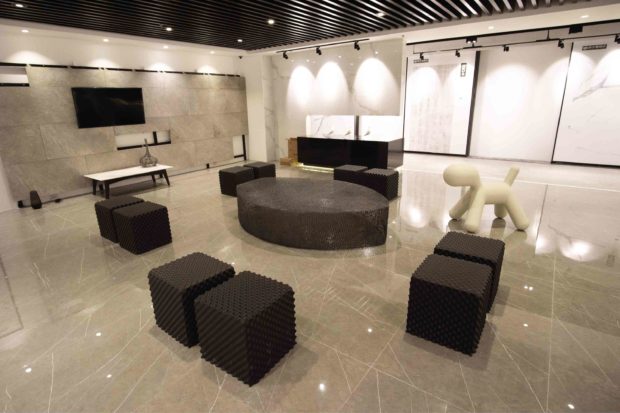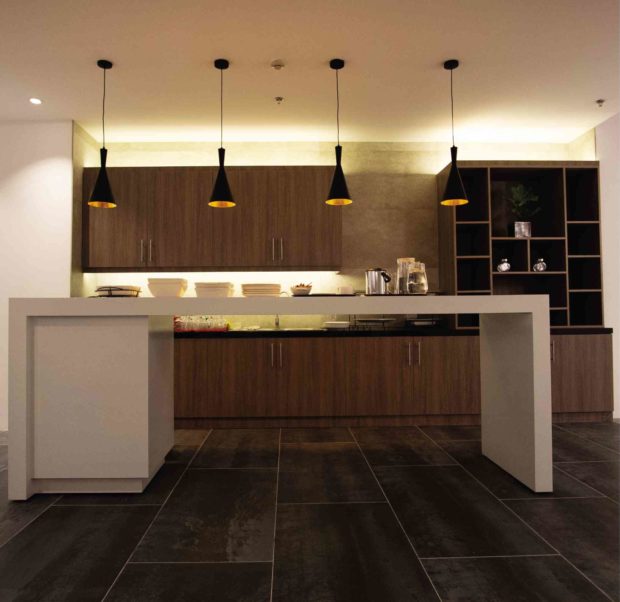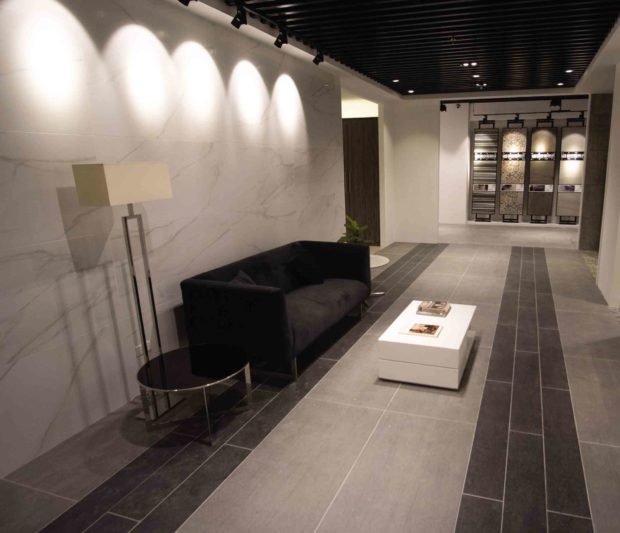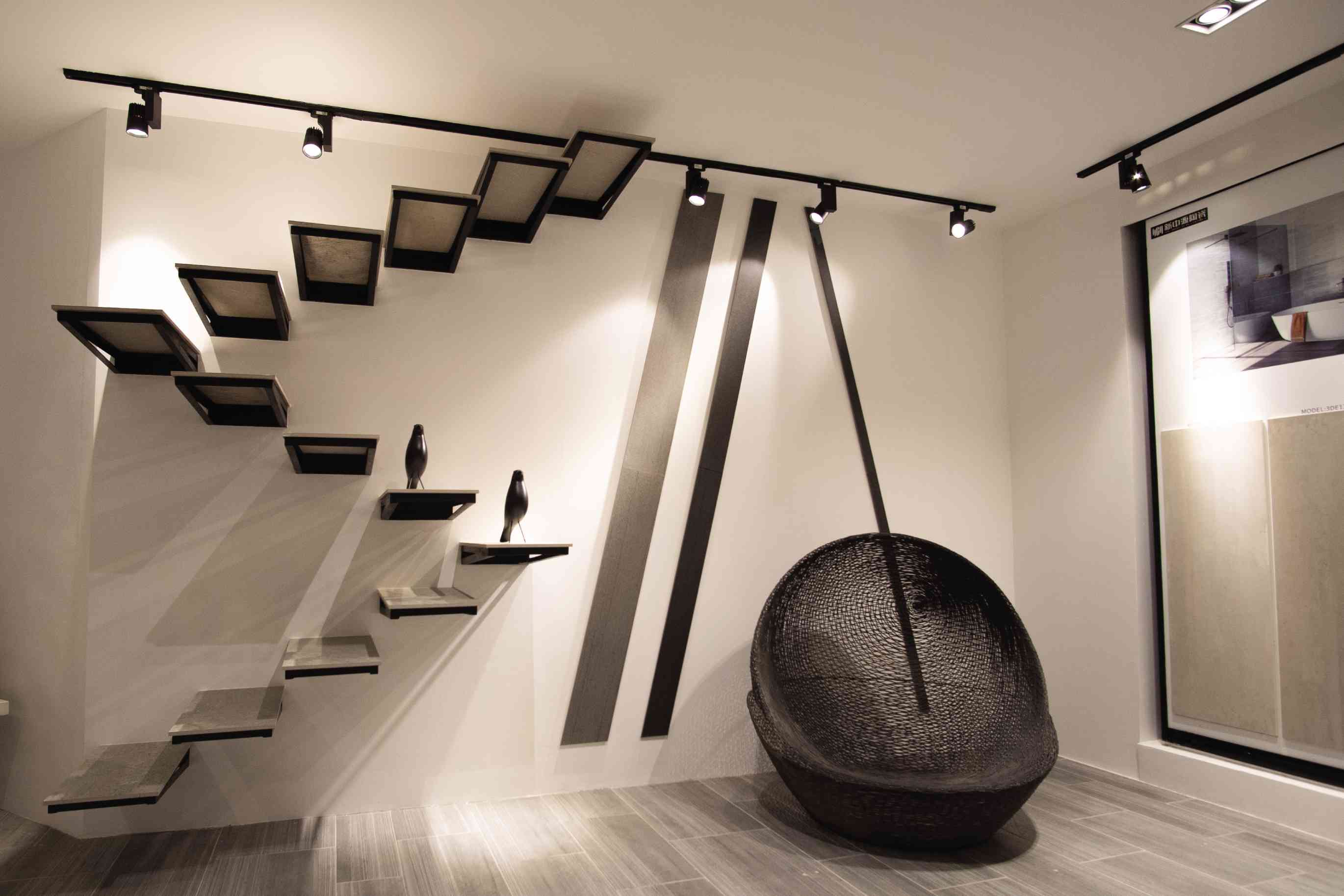
When he built his house, architect Conrad Onglao had to import tiles from Italy for the flooring. There was nothing fancy about the design, but they were elegant, easy to maintain and suited the architect’s restrained color palette.
Years later, Onglao visited the Esta Galleria tile plant in Foshan, China, and his jaw dropped when he saw the variety of tiles and their various applications for the home.
Because the factory integrates artisanal practices with state-of-the-art production, the manufacturer can experiment with new designs and textures.
“Before, you had to import from Italy. Now, China has surpassed it with its product offerings,” he said. “The perception of the tile here is that it’s a small block that’s used for bathrooms and kitchens.”
The 725-square-meter Esta Galleria showroom at Glorietta 3 should change that mind-set.

Styled by Onglao, the Philippines’ first tile gallery and lifestyle store shows how porcelain tiles can bring luxury to the walls and floors of a living room, or how ceramic tiles can be used for stair treads and floorboards.
The showroom showcases the 2019 trends, as it features a range of finishes, from matte to polished to reflective surfaces, while others mimic the natural veins of stones. These add visual dimension to walls and floors.
Homogenous tiles are out. For 2019, the trending tiles are those that look handmade. Earthy and muted colors will be in vogue. The classic black-and-white tiles and geometric patterns are being revived, lending a graphic look.
Tiles that resemble raw and unfinished concrete will go well with lofts and industrial-inspired interiors. Terrazo-inspired tiles create a sophisticated look.

Quality materials
Porcelain tiles are denser than ceramic tiles and hold up for years. The prices range from P327.99 for a 60 cm x 60 cm tile, to P4,000 for 1,000 cm x 2,000 cm.
“It’s a one-stop shop where architects and designers can bring their clients to see how the tiles can be used,” said Onglao. “There’s a tutorial on how to install the tiles. Other home depots merely offer tile samples, but don’t offer guides.”
Esta Galleria is designed like a home, where various tiles in glazed and matte finishes are applied on the walls.
The spaces are furnished by Dimensione and accessorized with Ann Pamintuan’s wire furniture and Don Jaime Zobel de Ayala’s artworks.
There are two bedrooms, mockups of Alveo and Avida condominiums, which show how the tiles are used on floors and walls. The gallery can serve as dinner venue for potential clients, designers and developers.

Another feature is the inkjet technology, or a “printer” for tiles, which makes it possible to reproduce surface materials such as wood, brick, travertine, granite, marble, limestone and slate. The reproductions also feel like stone or wood because the printing incorporates texture.
The design continues all the way to the tiles’ edges. When applied on a surface, the veins and shades look like real stone rather than tile.
Onglao said his project involved a house whose façade uses tiles that mimic granite. He noted how most tiles on the market had limited patterns and they looked uniformly machine-made, resulting in an artificial look.
“With this brand, one tile is different from the next,” said Onglao. “That’s characteristic of natural stone with its irregular patterns. Tiles are cheaper than stone, quicker to mount. They are low maintenance; you mop them. They also don’t chip or crack.”
Onglao added that Esta Galleria also produces cylindrical tiles that can wrap around columns, and prints patterns like the image of the Philippines on a tile wall.
Rowena Tomeldan, chair of Esta Galleria in the Philippines, said this is the first venture between Ayala Land Inc. and Chinese conglomerate Nenking Group in the tile wholesale business. Their relationship dates back to 2007, when Ayala was an investor in a residential subdivision, Emerald Collection, in China.
Tomeldan said the tiles would be used for Ayala projects, but the showroom is open to designers, architects, contractors and other developers. “We provide premium quality tiles for the Filipino customer,” she said. —CONTRIBUTED










































